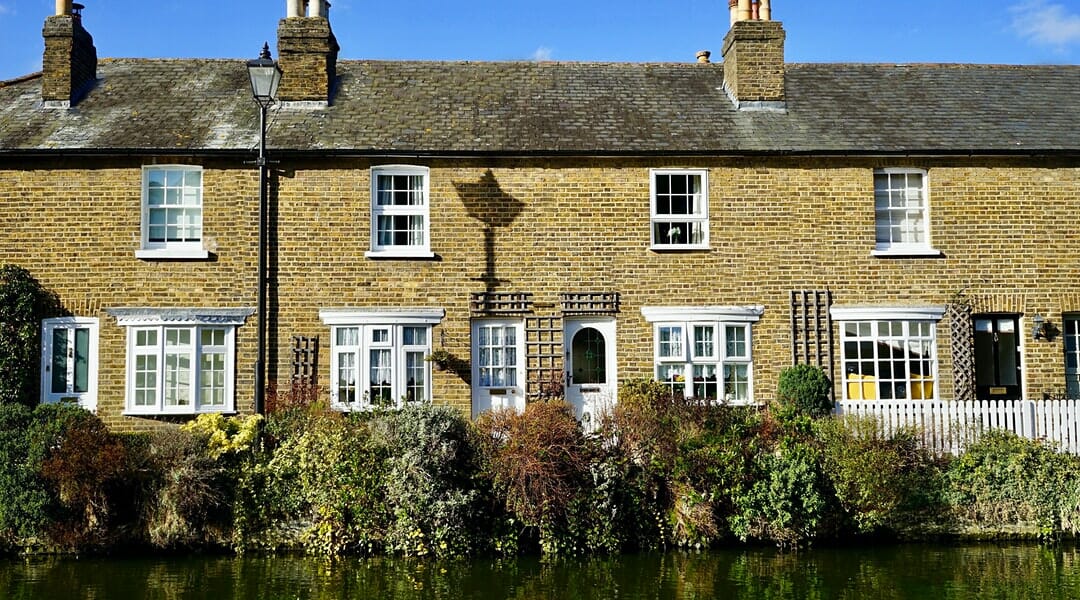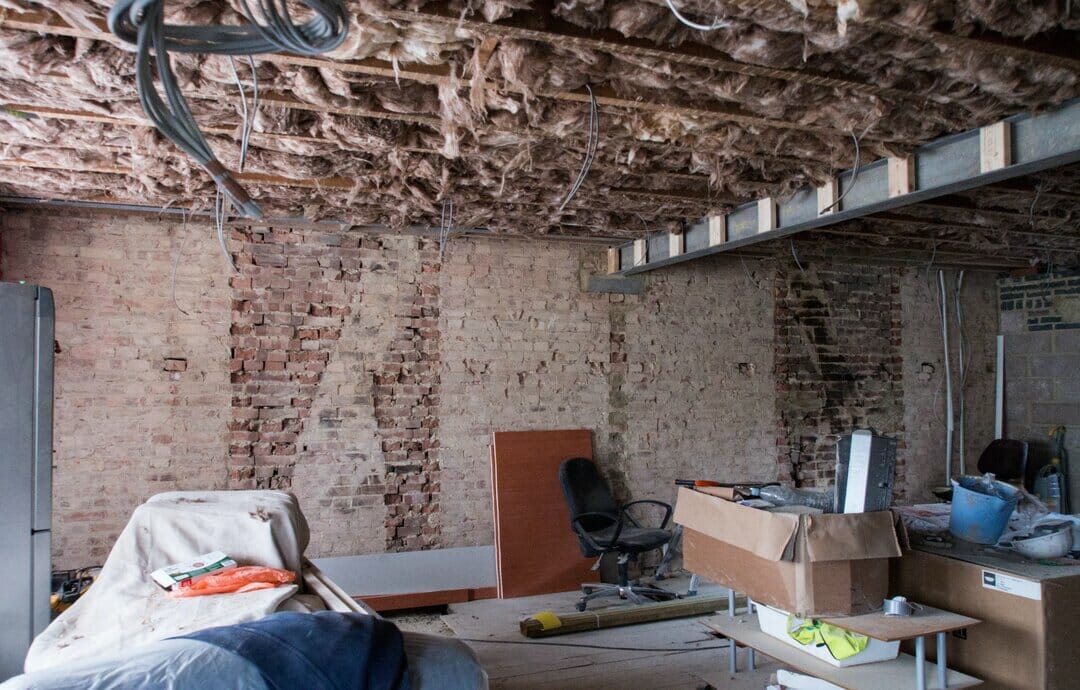In recent years, property prices across the United Kingdom and most of Europe have continued to rise. However, the post-covid property boom is over, and in 2023 we are starting to see prices fall slowly across the market.
Although the property market has been volatile, property investment is still very much an attractive proposition in 2023. Whether you are interested in becoming a buy-to-let investor or in flipping properties through development, property investment is still considered one of the safest investment choices as long as purchases are planned and the investments are treated like a business.
Investing in property does require funding to get started. The most obvious choice is to apply for a mortgage. However, this is not always an option for some properties that do not meet mortgage providers’ lending criteria, or if finance is needed quickly, so consideration must be given to other forms of finance such as a bridging loan.
- Bridge loans for investors
- Using a bridging loan in place of a traditional loan
- When to use a bridging loan?
- Can I get a loan for investment property?
- How to get a loan for an investment property?
- What types of property can you purchase with a bridging loan?
- Can I buy land with a bridging loan?
- Can I get a bridging loan for a property that isn’t currently habitable?
- Financing for rental property investors
- Commercial property investment loan
- Bridging finance for auction properties
Bridge loans for investors
Property investors are constantly looking for new opportunities to add to their portfolios. However, sometimes opportunities arise that require quick action, and traditional financing methods may not be able to meet the tight deadlines. In such cases, bridging loans can be an excellent option to bridge the gap whilst you arrange more traditional financing solutions. Before we get into when a bridging loan can be used, let’s first quickly define what they are and how they work.
What is a Bridging Loan?
A bridging loan is a short-term loan that can be used to finance the purchase of a new property quickly or where traditional mortgages might not be an option. Bridging loans are typically secured against the property being purchased, and the loan amount is based on the property’s value rather than solely on the borrower’s income or credit score.
How Do Bridging Loans Work?
Bridging loans are secured loans which means that the lender will require collateral to secure the loan. This is usually the property being purchased. However, it can also be another property that the borrower owns. The lender will evaluate the property’s value and determine the bridging loan’s terms.
Bridging loans are designed to be short-term loans. The loan term typically ranges from a few months to a year, and the borrower is expected to repay the loan in full at the end of the term. Interest rates on bridging loans are higher than traditional mortgages, but they can be a useful financing tool for property investors who need to purchase a property quickly.

Using a bridging loan in place of a traditional loan
We often get asked why someone would choose a bridging loan over a mortgage or other financial products. After all, mortgage funding is designed with property in mind, so what are the benefits of a bridging loan that a mortgage can’t offer? To answer that, let’s first look at the similarities and differences between the two types of finance.
BRIDGING LOANS
- A bridging loan is a short-term form of finance, usually around 6-12 months in duration.
- The value of the property decides the amount of the loan.
- The approval process is quick (especially at companies like Novellus which have no credit committee to obtain approval from), so the cash is sometimes available only days after it has been applied for.
- Lenders take a ‘charge’ as a form of security, which is generally property, so if a borrower defaults on their loan this can be repossessed to cover the repayment of the loan.
- When deciding whether to award the loan, lenders look at your ability to pay the loan off and what exit strategy you have in place.
- Interest is paid on the loan, although with Novellus, there are no early repayment fees.
MORTGAGE
- A mortgage has a charge as security against default. This is generally the property which is purchased with the use of the mortgage in question.
- A mortgage incurs interest fees, payable at regular intervals throughout the loan’s lifetime.
- Loans are only made against habitable properties.
- The mortgage amount is agreed against the property value, although income is a deciding factor in whether an applicant will be given the loan or not.
- A set amount of time is given to pay the debt off.
- If a borrower pays off the loan early, they may incur extra fees.
- It usually takes a while (several months) to arrange and approve.
- The repayment period can be anything up to 30 years.
So, there are similarities and differences between bridging loans and traditional mortgages. Bridging finance with Novellus can be a perfect option when you need finance fast or if you are considering a property that you can not get a mortgage for, such as a property classed as uninhabitable or if you do not meet the repayment criteria for a mortgage.

When to use a bridging loan?
There are several scenarios where a bridging loan can be a valuable tool for property investors.
-
Quick Turnaround on a Property Purchase
If you come across a property that you believe will be a lucrative investment but need to act quickly, a bridging loan can provide the funds you need to make the purchase while you wait for long-term financing, such as a mortgage, to come through.
-
Renovations or Improvements
If you are purchasing an uninhabitable property that needs renovations or improvements, a bridging loan can provide the necessary funds to get the work done quickly. Once the work is complete, you can refinance the property with a traditional long-term loan.
-
Chain Breaks
If you are in a chain of property sales and purchases, a bridging loan can provide the funds needed to complete the purchase of a new property before the sale of your existing property has been finalised.
-
Auction Purchases
Auctions can be a great way to pick up properties at a discount, but they often require a quick turnaround on financing. Bridging loans can provide the funds needed to make the purchase and can be repaid once long-term financing has been secured.
Can I get a loan for investment property?
In a nutshell, yes, you can get a bridging loan for an investment property.
In fact, bridging loans can be particularly useful for property investors looking to expand their portfolios or take advantage of investment opportunities that require quick action.
Bridging loans can be used to finance the purchase of an investment property while you wait for the sale of another property to complete or for long-term financing to be secured. They can also be used to fund renovations or improvements on an investment property, increasing its value and potential for returns.

How to get a loan for an investment property?
Getting a bridging loan for an investment property is similar to getting a bridging loan for any other purpose. Here are the typical steps to follow:
- Find a lender. Start by researching and identifying lenders like us here at Novellus that offer bridging loans for investment properties. Look for lenders who specialise in property investment and have experience in providing bridging loans.
- Check eligibility. Once you have identified a potential lender, check their eligibility criteria to ensure that you meet their requirements. For us here at Novellus, this means having a clear exit strategy and collateral, usually in the form of property, and undertaking a credit check to ensure you can repay the loan.
- Prepare documentation. You will need to provide documentation to support your application, including proof of income, details of the investment property and details of the property you are using as collateral.
- Apply for the loan. Once you have prepared your documentation, you can submit your application to the lender. The lender will review your application and exit strategy. They may request additional information or documentation.
- Receive approval and funding. If your application is approved, you will receive the funds for your bridging loan. At Novellus, we usually complete deals within 2-4 weeks and we can provide indicative terms within 24 hours of initial enquiry.
- Repay the loan. Once you have completed your investment project, you must repay the bridging loan. This can be done by selling the investment property, refinancing with a long-term loan or using other funds to repay the loan.

What types of property can you purchase with a bridging loan?
Virtually any type of property can be bought with a bridging loan, regardless of condition. They can be used to purchase commercial property, shops, land, flats, houses, units, shops, warehouses, hotels, restaurants, offices, holiday homes – just about anything.
Additionally, if you already own a property, you can use that as additional security which can make financing a property portfolio easier (although if you live in the property you own, this will be a regulated loan). If you already have loans against the property you wish to use as security, it is still possible to get a loan via a ‘second charge’. As long as the original lender agrees to it and there is enough equity left in the property to cover the cost of the loan.
Can I buy land with a bridging loan?
Yes, it is possible to use a bridging loan to purchase land. Bridging loans are a flexible form of short-term finance that can be used for various purposes, including land acquisitions.
When considering a bridging loan for land, traditional lenders may require that the land has planning permission or the potential to obtain planning permission for residential or commercial development. They may also require that the land has suitable access and services such as water and electricity. A bridging loan allows investors and developers to purchase land with or without planning permission.

Can I get a bridging loan for a property that isn’t currently habitable?
A habitable property, in the context of a mortgage, is a property that is suitable for living in immediately. It generally refers to a property with basic amenities, such as running water, electricity, and a functioning heating system. It should also be structurally sound and meet building and safety regulations.
Mortgage lenders see uninhabitable properties as a risk. Should the project fall through and a borrower defaults on their loan, the property may be harder to resell and recoup the money they lent. A mortgage will never be issued based on the property’s potential, regardless of the vision and plans of the borrower.
As an investor, this can make it difficult to finance these types of properties. However, bridging finance could provide a solution to this problem. Many property investors use this type of funding to buy properties requiring complete renovation cheaply, then fix them up to sell on for a profit. If a borrower is using the loan to also cover renovation costs, they should overestimate the total cost in case of unexpected problems or bills. Once the property has been made habitable, it will be possible to obtain a long-term mortgage on the property, or sell it on, to repay the loan.
Financing for rental property investors
Buy-to-let or property rental investment has been popular with investors for many years. However, getting started in the buy-to-let market can be challenging when financing rental properties. Buy-to-let bridging loans are often utilised by investors looking to bridge the gap between securing financial solutions. Whether that means securing an asset when a chain breaks or acting quickly to secure a deal whilst long-term finance is arranged.

Commercial property investment loan
Commercial bridging loans can be used for commercial properties. This includes buildings which are used for business purposes. Commercial properties may include shops and warehouses, offices, restaurants and more.
Commercial bridging finance loan applications are assessed like our residential options – on a case-by-case basis. Therefore, the paperwork needed will vary between applicants depending on circumstances and business activities.
Bridging finance for auction properties
Choosing a bridging loan to buy a property at auction can offer several benefits to property investors. Firstly, a bridging loan can provide quick access to finance which is often essential when buying at auction as auctions typically require completion of the purchase within 28 days. Traditional mortgage finance may not be feasible within this tight timeframe. Bridging loans, on the other hand, can be arranged quickly, providing the necessary funds to complete the purchase within the auction deadline and avoid missing out on your ideal property due to your mortgage lender.
CONCLUSION
Bridging loans are an attractive financing option for property investors due to their flexibility and versatility. These short-term loans can be used for various purposes, including property purchases, property development and refurbishments, allowing investors to quickly access funds to take advantage of opportunities in the property market.
Bridging loans can also be arranged quickly, providing investors with the necessary funds within a tight timeframe. Additionally, bridging loans offer flexibility in terms of repayment, allowing investors to repay the loan early if they wish to avoid additional interest or extend the loan term if they require more time to complete the purchase or development.
Overall, bridging loans are a useful tool for property investors looking to finance property transactions or projects quickly and effectively. If you want to learn more about our bridging loan products, contact us today and one of our team will be happy to help.


